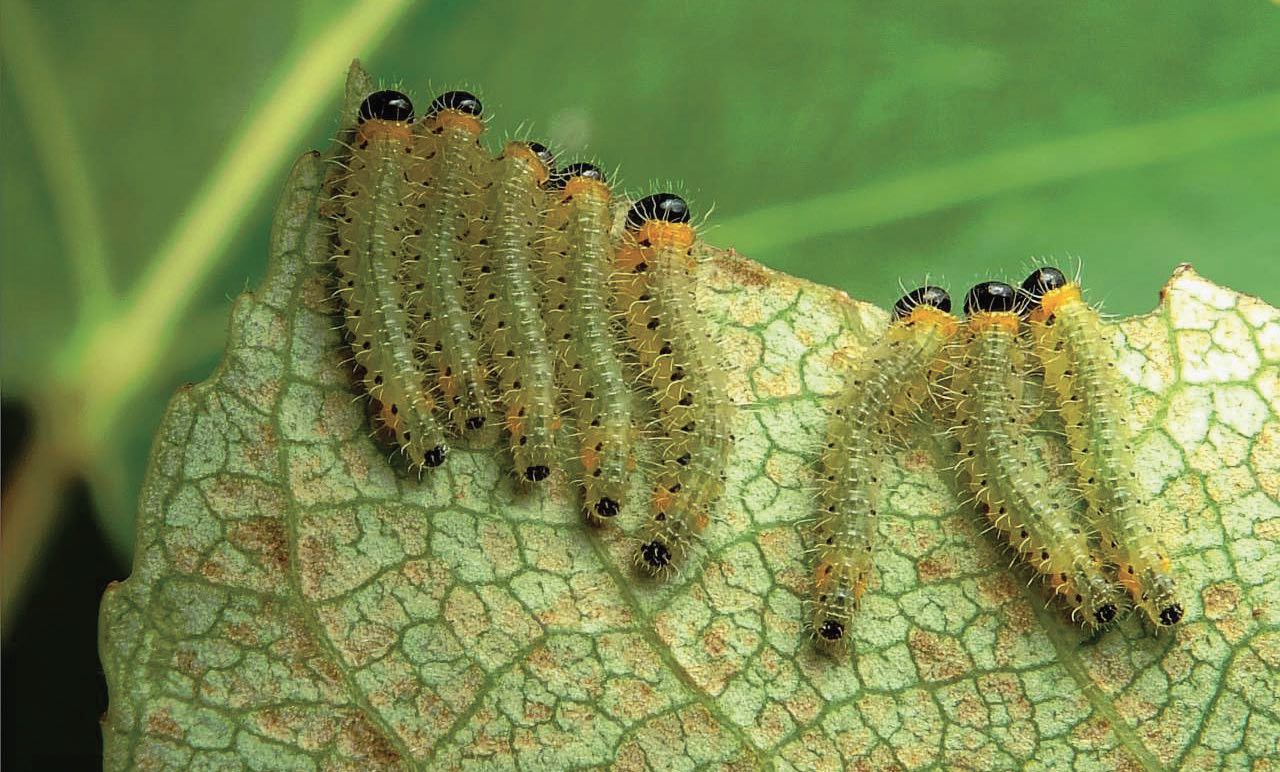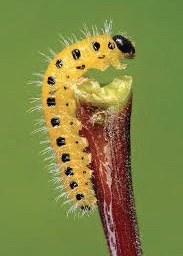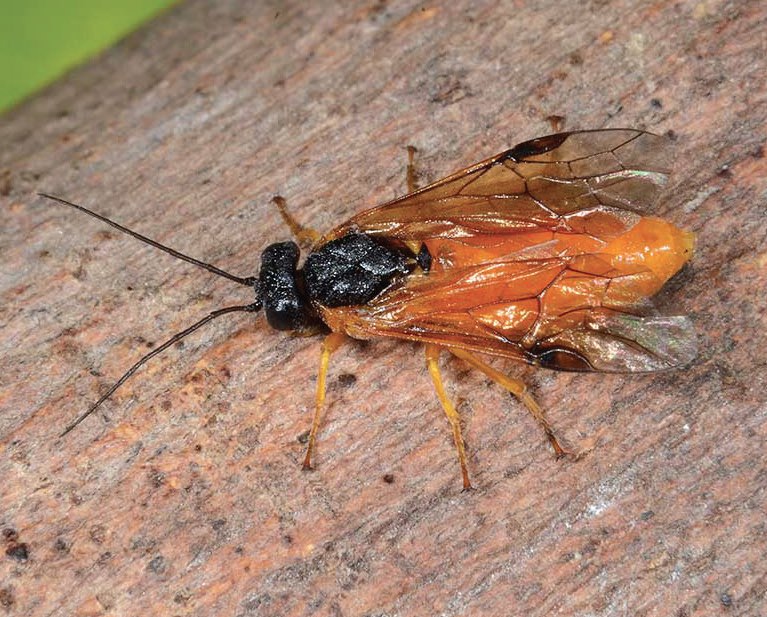PESTS AND DISEASES OF FORESTRY IN NEW ZEALAND
Managing the poplar sawfly (Cladius grandis)
 Information sheet, April 2019
Information sheet, April 2019

What does it look like?

Caterpillar-like larvae are the most conspicuous life stage of the poplar sawfly, a new pest of poplars and willows in New Zealand. Larvae cluster together as they feed on poplar leaves. They change from pale green/yellow with rows of tiny black dots as they grow, to large (<16 mm long) bright yellow larvae with two distinct rows of black spots running along the sides of the body. Larvae of all ages are covered in white hairs. The head is generally black. Mature larvae walk down the tree trunk and pupate in bark crevices, leaf litter, or any sheltered spot near the base of the tree. At this point, they will remain hidden until they emerge as adults. The adults are up to 9 mm long with an orange body, a black head and thorax, and yellow iridescent wings.
Poplar and willow trees
Many important species and cultivars of poplars are planted across New Zealand. These trees provide shelter and fodder for livestock, stabilise erosion prone soil, and are widely used as amenity trees, particularly in rural areas. Poplars are the predominant host of the poplar sawfly, with willows as minor hosts. It is not yet known which, if any, species of poplar may be more resistant to the poplar sawfly.

Repeated defoliation over multiple seasons will reduce tree growth, compromise root vigour, and in extreme cases tree death may occur, especially during times of drought stress.
Controlling poplar sawfly
Poplar sawfly was first located in New Zealand in Dunedin, in January 2019. It is native to Europe, and the Middle East. The species was introduced to North America over a century ago and periodically reappears as a pest of American poplars.
Natural enemies. In Europe the poplar sawfly is not a pest but seems to be controlled by naturally occurring diseases and parasitoids. These natural enemies are not known to be present in New Zealand, so the poplar sawfly population may expand more rapidly.
Pesticides. Chemical controls have not yet been tested in New Zealand. Overseas experience has shown:
- Insecticides registered in New Zealand for use on insect pests of forage crops (listed in the Novachem Manual) may be suitable for application on poplars. Other species of sawflies have been successfully treated overseas with products containing the chemicals: benzoyl phenyl urea (diflubenzuron), organophosphate (dimethoate, chlorpyrifos) or synthetic pyrethroid (alpha-cypermethrin or deltamethrin).
These products will need to be sprayed into the poplar canopy to control actively feeding larvae. Re-application of insecticide may be required during the summer months when larvae re-appear. - Painting the trunk of the tree with dimethoate, and/or burning or drenching autumn leaf litter with an insecticide, have not been trialled.
- Organic options include the application of kaolin dust that has proven to be effective on the closely related pear slug.
- Biopesticides, such as products containing Bacillus thuringiensis, may be useful but will need to be tested for effectiveness.
Spread prevention
Adult sawflies could potentially fly over long distances (several kilometres) in spring and summer. The spread of the species beyond Otago is seen as inevitable in the medium to long-term, with an estimated rate of spread of 200 to 300 km per year.
Cocoons concealed on vehicles, farm equipment, logs etc that are stored near affected trees may also inadvertently be spread by human activities. It is not known if bare poplar poles will carry the overwintering cocoon, however it is recommended to carefully inspect or spray them prior to shipping from infested nurseries.
Similar species
Poplar sawfly may be confused with the willow sawflyNematus oligospilus that may be present throughout the warmer months on willows. Both the larvae of the willow sawfly and the abdomen of the adult are light green in colour.
Frequently asked questions
“Will birds eat it?” No. The poplar sawfly larvae are unpalatable to birds.
“How did it get here?” We do not know how this insect arrived in New Zealand.
“Will it attack any native trees?” No. New Zealand does not have any representatives of Populus (poplars), Salix (willows) or other plant families closely related to the Salicaceae.
“Will it sting or bite me?” No. The insect is not aggressive and does not bite. The adult female sawfly cannot sting but uses an ovipositor to lay eggs into the stem of poplar leaves.
“Is there a way to monitor or control this pest by using pheromone traps (as for fruit flies)?” Not yet. While the poplar sawfly may produce a sex pheromone, however this has not yet been identified to enable a reliable trap to be developed.
Contact information
Scion: Telephone 07 343 5899 Email: sawfly@scionresearch.com



 Farm Forestry New Zealand
Farm Forestry New Zealand

